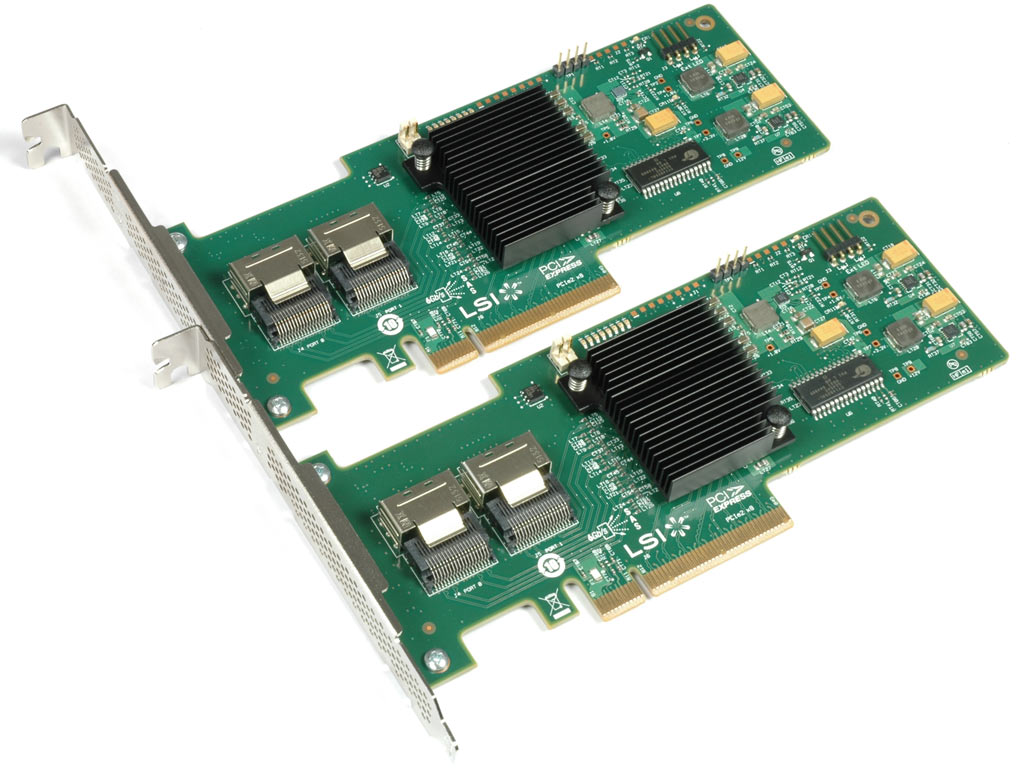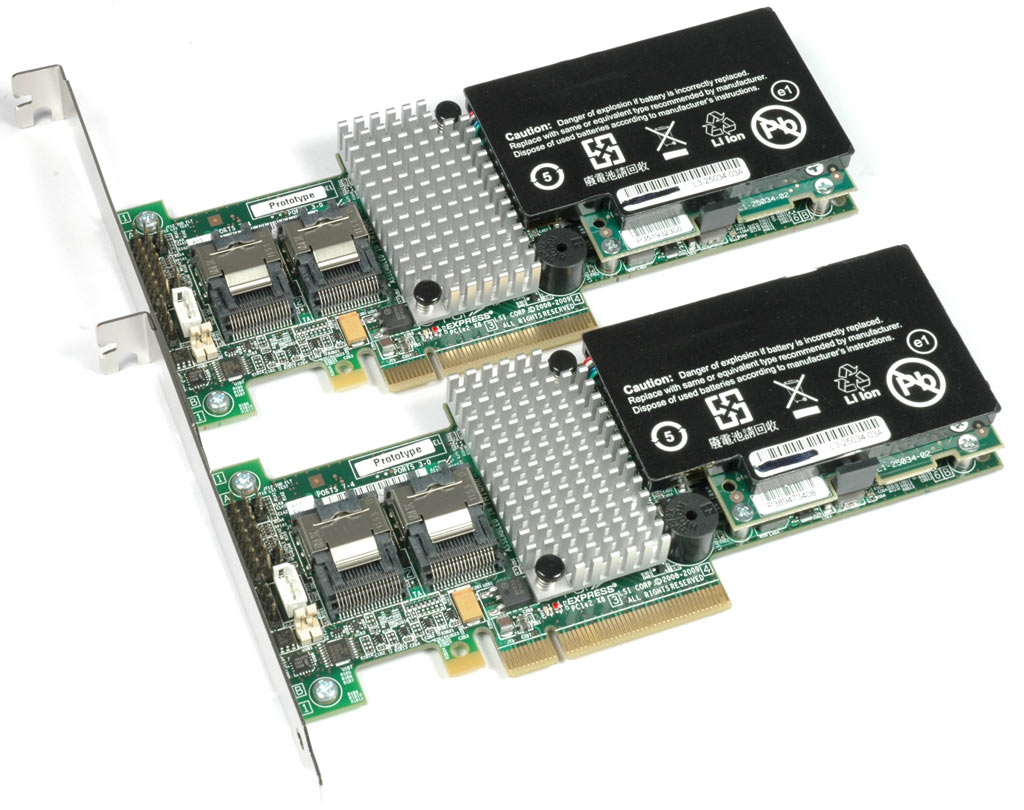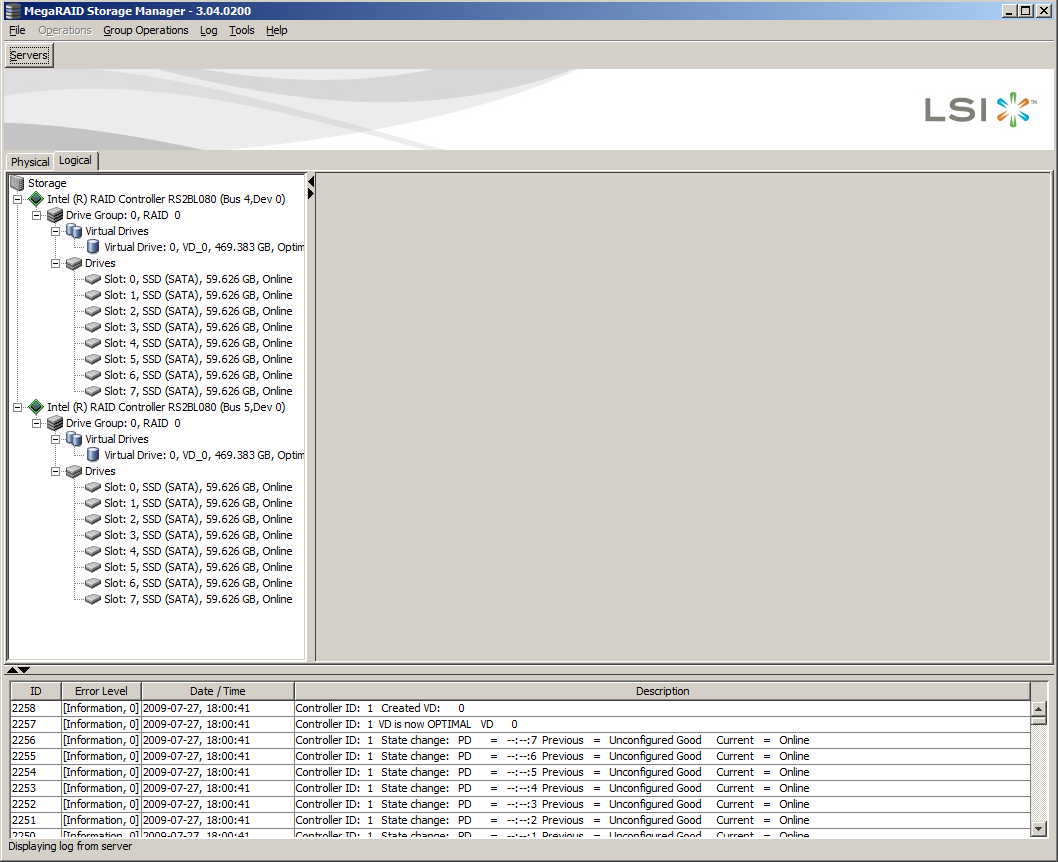Another Record Broken: 6 Gb SAS, 16 SSDs, 3.4 GB/s!
Controllers: LSI 9260-8i (RAID Controller) And 9210-8i (HBA)
LSI MegaRAID 9260-8i
Let’s look at the naming of these new controllers first. The designation “8i” stands for eight internal ports; “9200” is the new PCI Express 2.0 RAID-on-Chip generation; and RAID 6 is supported, which you can tell from the second part of the model number (“60”).
LSI offers two internal SFF-8087 MiniSAS connectors, which host four SAS/SATA connections each. The card is a low-profile design, which can also be deployed into compact 2U rackmount servers. You’ll just have to bend the cables, as the connectors point upwards towards the top of the rackmount enclosure.
Connectivity
LSI totally redesigned its architecture to meet the demands of SAS/600 environments. The RAID-on-Chip (RoC) architecture is built around an LSI SAS2108, which includes the x8 PCI Express 2.0 interface and SAS/600 connectivity (6 Gb/s).
It can access a 512 MB DDR2-800 cache memory, and a battery backup module (BBU) was already installed on our samples (though LSI says that the BBU is still an optional component). The BBU prevents data loss in case of power failure while unwritten data is still in the controller’s cache memory.
Performance?
Get Tom's Hardware's best news and in-depth reviews, straight to your inbox.
According to LSI, the controller itself supports a maximum read throughput of 2,875 MB/s, and a peak write performance of 1,800 MB/s. Knowing that we’re using two controllers and Windows software-based RAID to create an array across two controllers (and two different PCI Express links) we’re clearly on the safe side regarding bandwidth.
LSI supports RAID levels 0, 1, 5, and 6 with double redundancy, as well as nested RAID levels 10, 50, and 60. We recommend looking at the controller’s datasheet on the LSI Web site for more details.
LSI MegaRAID 9210-8i
The 9210-8i, aka Intel RS2BL080, offers the same number of SAS/SATA ports as the 9260-8i, and the PCB has exactly the same dimensions, but the product is somewhat different, and much simpler overall. It does not feature a powerful RAID-on-Chip solution with XOR acceleration for RAID 5 and RAID 6; it does not come with cache memory; and it doesn’t feature a battery backup unit.
However, that strip-down may be helpful in terms of throughput, as there is no processing unit and no cache memory that might be trying to improve performance while effectively limiting it in our scenario (as was the case with Adaptec’s RAID 5805). Of course, it also helps with pricing, we're sure.
We don’t have much information on the 9210-8i, as it has not yet been officially released. It also utilizes PCI Express 2.0 (eight lanes) as one of the first products on the market, and it is ready for SAS/600 drives as well.
Creating a RAID 0 Stripeset on LSI’s 9200-8i Cards
The MegaRAID Storage Manager lists all LSI controllers and attached devices.
Once a RAID array has been created, it will also list the volumes, called Virtual Drives.
Creating an array can be done using simple commands, or by choosing the advanced option.
Once all drives are added into a new drive group, you can set parameters and policies. These were the settings we used.
Current page: Controllers: LSI 9260-8i (RAID Controller) And 9210-8i (HBA)
Prev Page The SSDs: Sixteen Intel X25-Es Next Page RAID Creation, Test Setup, And Throughput





